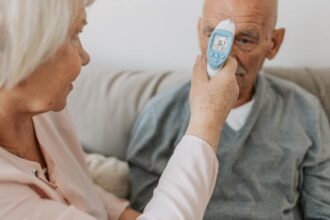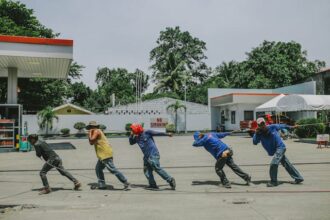In the face of escalating global climate change, extreme heat waves are becoming increasingly frequent worldwide, prompting in-depth epidemiological research into their effects on different demographics. Recent findings reveal a stark disparity in heat-related mortality rates between genders, with women being disproportionately affected compared to men. A groundbreaking study led by Olivia Leach, a doctoral candidate in kinesiology at Penn State, alongside her advisor W. Larry Kenney, a professor of physiology and kinesiology holding the Marie Underhill Noll Chair in Human Performance at the same institution, brings to light the physiological reasons underpinning this vulnerability among older women.
The study’s findings, published in the American Journal of Physiology-Regulatory, Integrative and Comparative Physiology, suggest that women between the ages of 40 and 64 exhibit a similar level of vulnerability to men 65 years and older. This comparison is novel as it delineates physiological differences as the root cause of increased susceptibility rather than merely the demographic prevalence of older women compared to men. This is a pivotal shift from previous assumptions, as it challenges the notion that the vulnerability differences between men and women under 30 are negligible.
The researchers conducted their experiments in a controlled environment, using a specialized environmental chamber in Kenney’s laboratory. They tested 72 participants aged 40 to 92 years, who undertook light physical activities within the chamber to mimic everyday tasks that would be unavoidable even during a heatwave. The temperature and humidity levels were gradually increased until the participants’ bodies could no longer effectively cool themselves, causing their core temperatures to rise. Before commencing the activities, each participant ingested a small device encased in a capsule that continuously monitored their core temperature.
This study forms part of the PSU H.E.A.T. project, which stands for Human Environmental Age Thresholds, spearheaded by Kenney. Over five years, the project has undertaken over 600 experiments involving nearly 200 participants, exploring the combined effects of heat and humidity on human tolerance. The findings from these extensive experiments are intended to map out “livability limits” — the thresholds beyond which daily activities become significantly hindered by heat, necessitating interventions such as seeking air-conditioned environments to prevent heat-related illnesses like heat stroke and heat exhaustion.
Leach’s study also noted that as individuals age, their susceptibility to heat increases due to diminished efficiency in physiological cooling mechanisms such as sweating and blood circulation to the skin. These mechanisms are crucial for heat dissipation; sweating allows for heat to be carried away from the body, while increased blood flow to the skin aids in heat release to the surrounding environment.
An exciting aspect of the study is the homogeneity in health metrics among younger adults, where differences in heat vulnerability based on biological sex are non-existent. This homogeneity diminishes with age, and older adults show significant variability in their physiological responses to heat. According to the study, the most critical factors predicting heat vulnerability in healthy adults are age and biological sex, overshadowing other potential influences like cardiovascular health or body mass.
In light of these findings, it becomes imperative for policy-makers and community leaders to consider the unique vulnerabilities of older women as they prepare for more frequent and severe heat waves. This demographic should play a crucial role in the strategic planning for heat emergency responses and public health advisories, ensuring that this at-risk group receives the necessary support and information to safeguard against the dangers posed by rising global temperatures.
More information: Olivia Leach et al, Sex differences in heat stress vulnerability among middle-aged and older adults (PSU HEAT Project), American Journal of Physiology-Regulatory, Integrative and Comparative Physiology. DOI: 10.1152/ajpregu.00114.2024
Journal information: American Journal of Physiology-Regulatory, Integrative and Comparative Physiology Provided by Penn State








